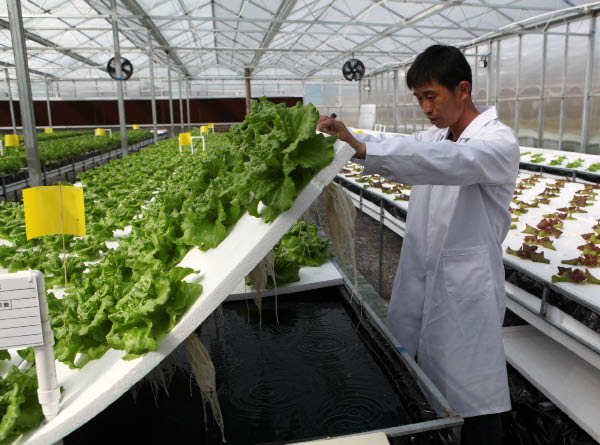| Sci-Tech Progress Will Propel China's Agriculture
– An Interview with Chen Xiwen, Deputy Director of the Central Rural Work Leading Group and Director of Its General Office
By staff reporter LI YUAN
CHINA’s grain output hit 571 million tons in 2011 – 24.7 billion kilograms more than the previous year, so achieving eight consecutive years of sustained grain production growth. The country has also set a new record by maintaining more than 500 million tons of annual grain production over the past five years.
There is, however, an old Chinese saying, “If people are to eat every day, crops must be planted every year.” Both natural and human factors have created uncertainties in China’s grain production. Maintaining grain security is a constant topic in a country with such a large population.
Under the challenges of abnormal climate, rising costs and farmers’ waning enthusiasm for growing crops, what does the future hold for China’s agriculture? To find out, China Today interviewed Chen Xiwen, deputy director of the Central Rural Work Leading Group and director of its general office.
 |
|
A technician checks on lettuces growing hydroponically at Yizhou Agricultural Technology Company in Wenling City of Zhejiang Province. |
Develop Agriculture Through Science and Technology
“There is no doubt that agricultural safety is one of the paramount issues in a country with a population of 1.3 billion,” Chen began. “Expanding grain output by relying on higher material input is no longer feasible. We must instead look to science and technology and make optimum use of our available resources. Promoting innovation in agricultural science and technology is the main theme of this year’s No.1 document jointly released by the Communist Party of China Central Committee and the State Council.”
The No.1 central document, published each year since 2004, highlights the Chinese government’s vigilance on rural issues. The 2012 document emphasizes the crucial role of agricultural technology.
Chen acknowledges the huge gap between China and developed countries in agricultural infrastructure and technology. “Barely 50 percent of total arable land in China is irrigated, which means that almost half of the country’s harvests depend on suitable weather conditions. As science and technology contributed 53.5 percent to agricultural growth last year, China has clearly made great progress in this respect, but still lags far behind developed countries.”
As far back as 1989, the Chinese government issued a document promoting proven agricultural science and technology applications, and pinpointing stable growth of grain production as the foundation for national economic development. It stated that the development of agriculture was supported by policies and investment, as well as science and technology, but the latter was the ultimate solution.
Two decades later, shortages of arable land and water impede China’s agriculture, and there is growing pressure to ensure protection of the ecological environment. Since China joined the WTO, there has been rising demand on the international market for high-quality, green farm products. In Chen’s view, the traditional production mode that relies on resource consumption is no longer tenable. Other challenges to contend with include shortages of skilled farm workers and soaring labor costs. All of these factors signify that China must now employ science and technology to maintain sustainable agricultural development.
At the Central Rural Work Conference at the end of 2011, the Chinese government set its grain production goal for 2012 at more than 525 million tons, a figure lower than that for 2011.
“The Chinese government is clearly cognizant that China has a long way to go before it can meet international advanced standards of modern agriculture. Innovation in science and technology is the only way of ensuring long-term, healthy agricultural development,” Chen said.
| 